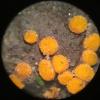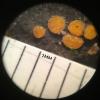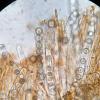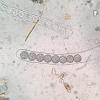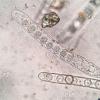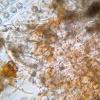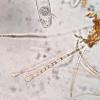
31-12-2025 19:27
Collected from loamy soil, at waterside (completel

30-12-2025 16:44
Pascal DucosBonjour,Une anamorphe rose stipitée, très nombre

30-12-2025 17:14
 Bernard CLESSE
Bernard CLESSE
Bonjour à toutes et tous,Pourriez-vous aider Albe

29-12-2025 10:15
Hulda Caroline HolteHello, I found and collected this propoloid ascom

30-12-2025 09:04
Hello.A Pyrenomycete sprouting sparsely but very d

29-12-2025 17:44
Isabelle CharissouBonjour,J'aimerais savoir si d'autres personnes au

12-11-2021 00:03
Lepista ZacariasHi everybody,A week ago in my fiels trip I noticed
Asci are about 232-297 by 17-24µm and IKI-.
Spores in asci appear in 3 forms. 1. Smaller, thick walled, hyaline, globose and multi-guttulate. 2. More or less the same as above but wrapped in a gelatinous sheathe, and 3. larger globose, hyaline ascospores with spines. I assumed that the spores ornamented with spines were the mature ascospores and measured those: 20-21 by 20-21µm. The spines are as long as 2.5 µm.
Excipulum appears to be textura angularis. Paraphyses have orange contents and are slightly swollen at the tips to a width of about 7.5µm.
Is this Ramsbottomia crechqueraultii? I have noticed that many online resources (Indexfungorum etc.) retain this species in Lamprospora. Any opinions are welcome!
Thanks in advance.
Ethan

Benkert & Schumacher (1985, Agarica 6(12): 28-46) stated in their emendation that the genus Ramsbottomia differs from Lamprospora in not being bryoparasitic, having ectal excipulum of t. globulosa or globuulosa-angularis, and having smooth margin (not crenulate / frayed like Lamprospora). I don't know if there are any molecular data on the Ramsbottomia-Lamprospora relationship.
There should be short and thick thin-walled hyphoid hairs on the receptacle, either hyaline or light brown. If the latter, you might compare R. lamprosporoidea too (if you acknowledge it as good species and not a synonym of R. asperior). I haven't seen yet the spore sheath to survive to their maturity, usually it disappears sooner. Some Scutellinias have similar one - S. trechispora or legaliae.
It's a very nice genus, I'm always glad when I find it, but I think it needs some molecular work to clarify how many species there actually are (2, 3, or 4, in different authors' concepts) and how to distinguish asperior from crechqueraultii (is the primary character ornamentation height or less globose shape?).
Viktorie
Best wishes,
Gernot



